Re: H1Spyderco Machete?
Posted: Mon Sep 22, 2025 12:59 am
Yikes.
"...thicker than my wrist but thinner than my thigh..." sounds like my target market.JoviAl wrote: ↑Sun Sep 21, 2025 7:03 pmI might have a lot of hours under my belt using machetes, but my use case might be a bit less general than someone like @vivi’s, as I only use machetes for materials thicker than my wrist but thinner than my thigh, and a lot of that is succulent plants like massive 8-10ft tall tropical banana stems. I’m taking a break from pruning just now to write this (and being harassed byNaperville wrote: ↑Sun Sep 21, 2025 4:33 pmI think we have to default to hearing out vivi and JoviAl as far as length and blade thickness go. They seem to be our two most prominent users with quite a bit of hands on use here, there may be others that I may have missed. JoviAl seems to be the most significant user here.
I was thinking a 15" to 16" blade but maybe as short as 14" works too. I am not knocking a 16" blade, I think that works but I am not an arborist. Whatever Spyderco makes, they will probably test it.
H2 should be fine. It should be able to be rolled to the desired thickness for a true machete. I was a bit surprised that I could not find a toughness chart from Larrin with H1 or H2 in it. Larrin should have links on his website for the most up to date toughness and edge retention charts. If Larrin does not have H2 samples we need to get him some.mosquitoes like I’m some sort of dessert). I’m using these three plus a ported Husqvarna 346XP - IMG_5498.jpeg
The JM2 is getting the majority of the use for defoliation as the SE grips and bites so well. The Silky Nata chopper is doing pretty much everything else. The Hoback is on the naughty step being a bit unwieldy for anything but banana stems which I’m not doing much of today -
IMG_5500.jpeg
IMG_5498.jpeg
This is about an hour and a half’s work, with another ~4 to go, but I’m chipping it into mulch as I go through a Peruzzo to use for soil erosion mitigation. Long and short of it is, if this is being sold to commercial users like me the most important KMD is rust resistance. The second priority would be either SE or a straight edge with a heavy tip. Those would get our attention. We use them for light chopping in thin green wood and succulents but not for the more general purpose use like yard work or going through a fallen tree, as we have access to more efficient commercial grade equipment for that like chainsaws. I’d buy almost any design so long as it was functionally rust proof. SE would be a bonus. I would defer to general users like Vivi for the actual design, as we really don’t have as broad a use case as an individual end user might for a trail companion or whatever else you might conceivably use it for.
I was sat here reading that now I’m home from work and comfortably clean and it occurs to me that I realistically used the chainsaw today on anything thicker than my forearm. My thigh is pretty thick, so it’d be more accurate to say I use machetes for two fingers to forearm thick stuff, but only if it’ll go right through in less than three or four strikes.Naperville wrote: ↑Mon Sep 22, 2025 5:56 am"...thicker than my wrist but thinner than my thigh..." sounds like my target market.JoviAl wrote: ↑Sun Sep 21, 2025 7:03 pmI might have a lot of hours under my belt using machetes, but my use case might be a bit less general than someone like @vivi’s, as I only use machetes for materials thicker than my wrist but thinner than my thigh, and a lot of that is succulent plants like massive 8-10ft tall tropical banana stems. I’m taking a break from pruning just now to write this (and being harassed byNaperville wrote: ↑Sun Sep 21, 2025 4:33 pmI think we have to default to hearing out vivi and JoviAl as far as length and blade thickness go. They seem to be our two most prominent users with quite a bit of hands on use here, there may be others that I may have missed. JoviAl seems to be the most significant user here.
I was thinking a 15" to 16" blade but maybe as short as 14" works too. I am not knocking a 16" blade, I think that works but I am not an arborist. Whatever Spyderco makes, they will probably test it.
H2 should be fine. It should be able to be rolled to the desired thickness for a true machete. I was a bit surprised that I could not find a toughness chart from Larrin with H1 or H2 in it. Larrin should have links on his website for the most up to date toughness and edge retention charts. If Larrin does not have H2 samples we need to get him some.mosquitoes like I’m some sort of dessert). I’m using these three plus a ported Husqvarna 346XP - IMG_5498.jpeg
The JM2 is getting the majority of the use for defoliation as the SE grips and bites so well. The Silky Nata chopper is doing pretty much everything else. The Hoback is on the naughty step being a bit unwieldy for anything but banana stems which I’m not doing much of today -
IMG_5500.jpeg
IMG_5498.jpeg
This is about an hour and a half’s work, with another ~4 to go, but I’m chipping it into mulch as I go through a Peruzzo to use for soil erosion mitigation. Long and short of it is, if this is being sold to commercial users like me the most important KMD is rust resistance. The second priority would be either SE or a straight edge with a heavy tip. Those would get our attention. We use them for light chopping in thin green wood and succulents but not for the more general purpose use like yard work or going through a fallen tree, as we have access to more efficient commercial grade equipment for that like chainsaws. I’d buy almost any design so long as it was functionally rust proof. SE would be a bonus. I would defer to general users like Vivi for the actual design, as we really don’t have as broad a use case as an individual end user might for a trail companion or whatever else you might conceivably use it for.
I'LL TAKE TWO
I been here 8 years. And I find hour opinion to be a bit much. Bye.
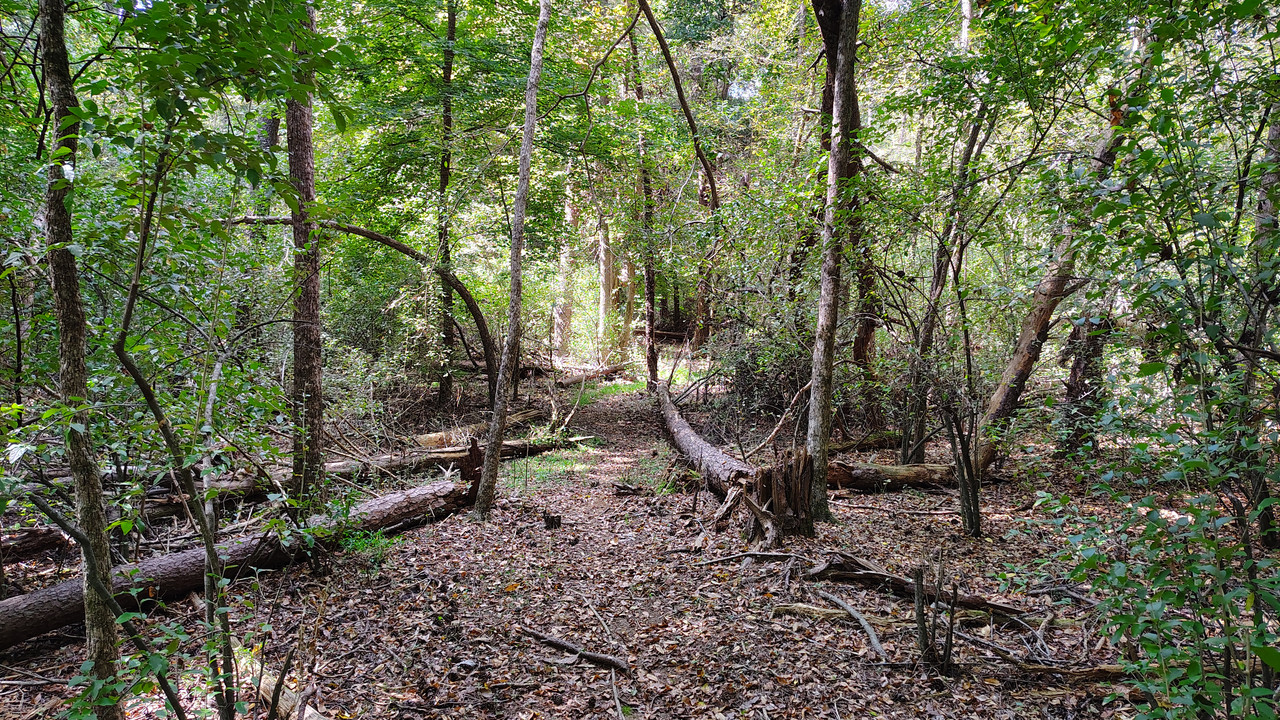
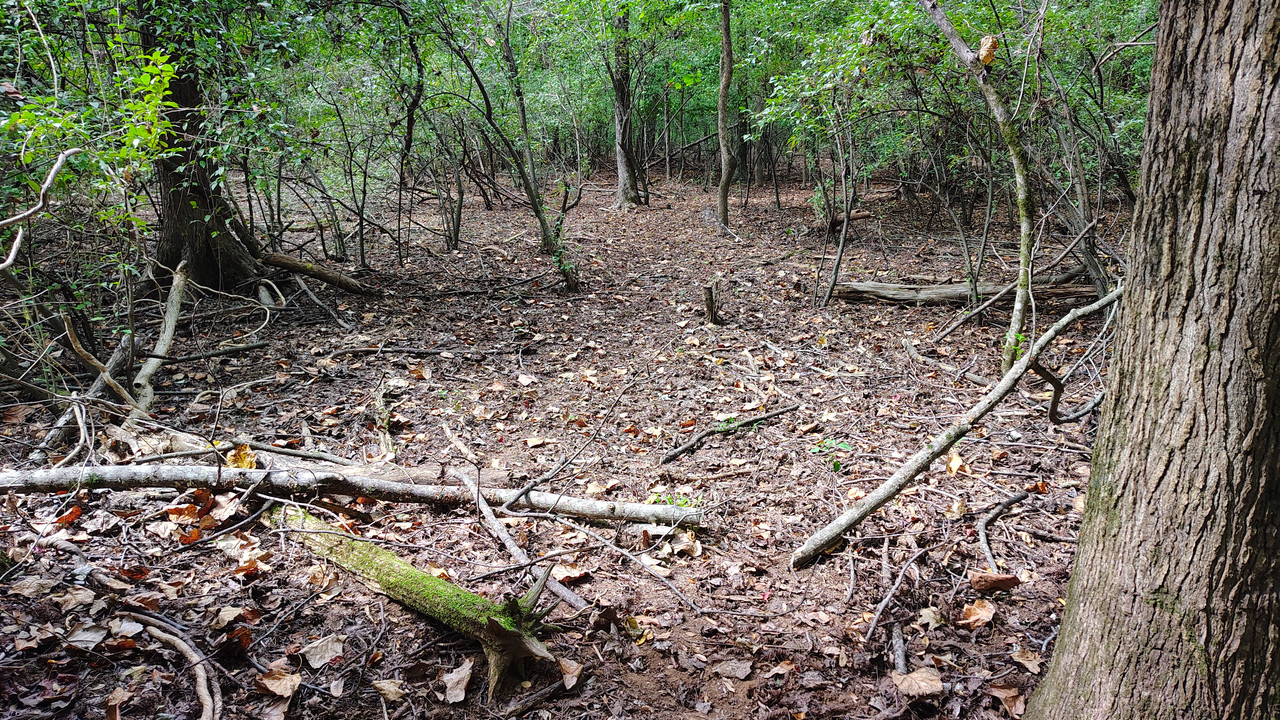
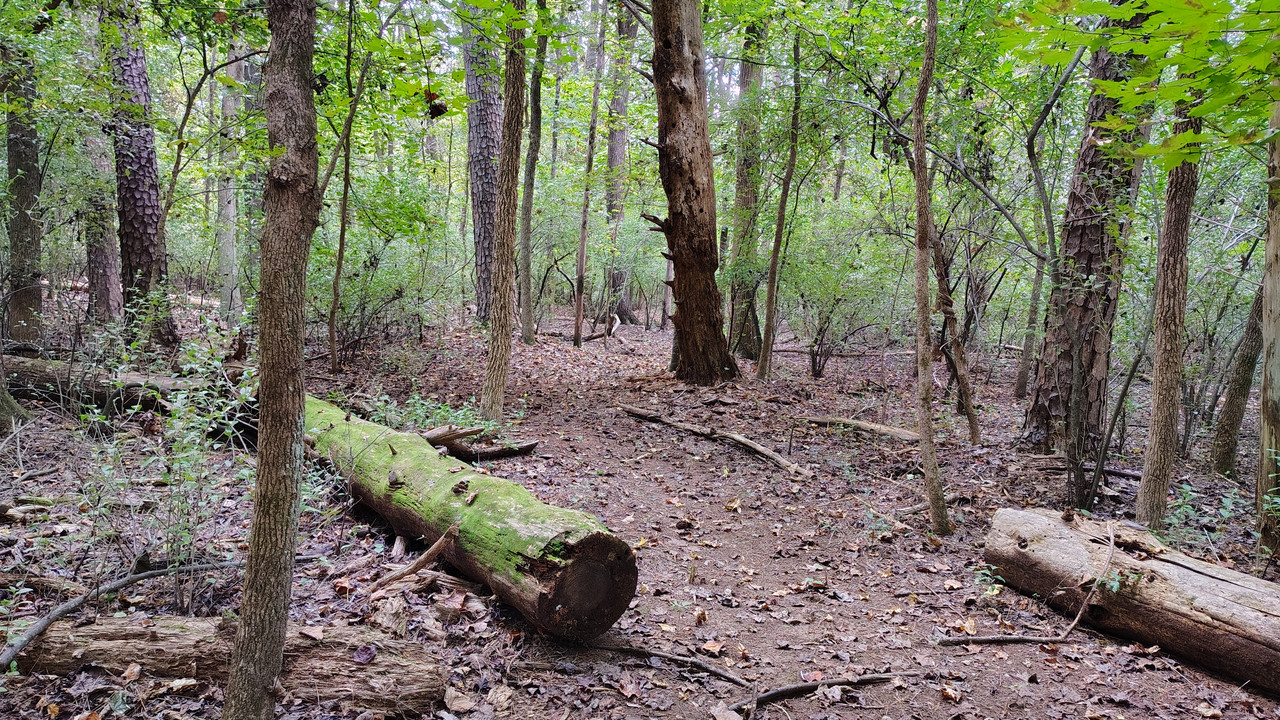
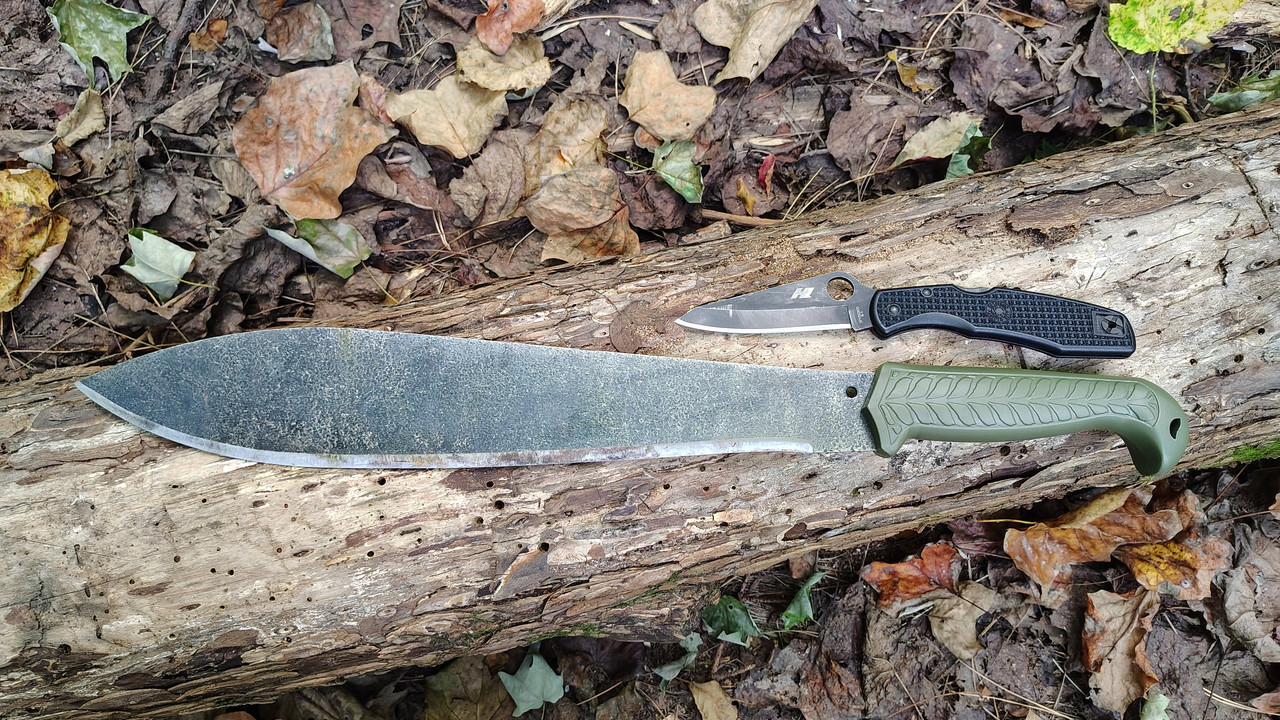
vivi wrote: ↑Mon Sep 22, 2025 12:20 pmwe've got a good thread going guys.
here's some example of the trails I maintain with my hand tools. 12-18" machetes, folding saws, and hatchets.
Keep in mind I haven't touched them for the past few months. Got some trimming to do and need to rake them good for fall camping season. That's what I'm out doing today.
That wrist thick limb on the trail was hacked through in a few chops with the Condor.
That log was sawed through with a hand saw.
Here's the Terrachete next to a Pacific Salt for a size reference everyone here can relate to:
Here's a video showing how the unique sheath can be used one handed, which isn't really possible with most machete sheaths.
Here's an example of one type of work it performs. Trimming undergrowth from the edges of my trails. It's very fast for this sort of work.
Thanks, Vivi. I know about the angled slash method, it really helps. When katanas are demonstrated on bamboo they never cut it at 90 degrees, it’s always an angled cut.vivi wrote: ↑Mon Sep 22, 2025 12:20 pmwe've got a good thread going guys.
here's some example of the trails I maintain with my hand tools. 12-18" machetes, folding saws, and hatchets.
Keep in mind I haven't touched them for the past few months. Got some trimming to do and need to rake them good for fall camping season. That's what I'm out doing today.
That wrist thick limb on the trail was hacked through in a few chops with the Condor.
That log was sawed through with a hand saw.
Here's the Terrachete next to a Pacific Salt for a size reference everyone here can relate to:
Here's a video showing how the unique sheath can be used one handed, which isn't really possible with most machete sheaths.
Here's an example of one type of work it performs. Trimming undergrowth from the edges of my trails. It's very fast for this sort of work.
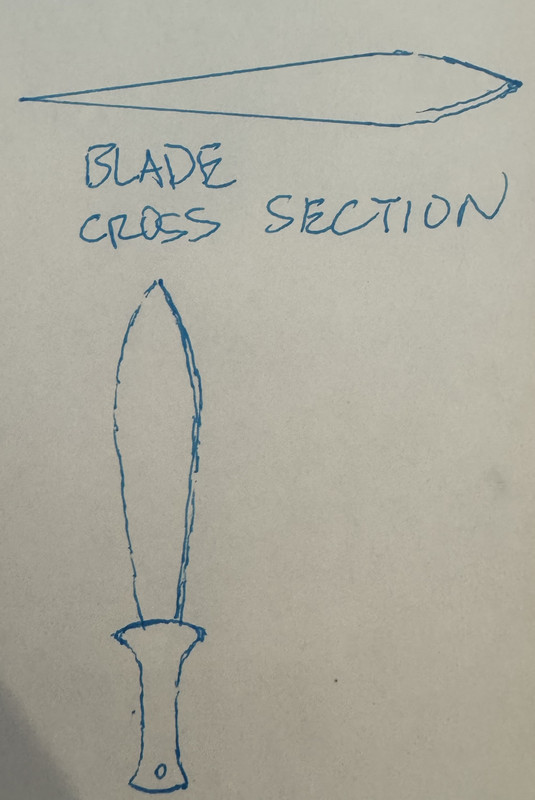
That’s some nice looking woodland you’ve got there man.vivi wrote: ↑Mon Sep 22, 2025 12:20 pmwe've got a good thread going guys.
here's some example of the trails I maintain with my hand tools. 12-18" machetes, folding saws, and hatchets.
Keep in mind I haven't touched them for the past few months. Got some trimming to do and need to rake them good for fall camping season. That's what I'm out doing today.
That wrist thick limb on the trail was hacked through in a few chops with the Condor.
That log was sawed through with a hand saw.
Here's the Terrachete next to a Pacific Salt for a size reference everyone here can relate to:
Here's a video showing how the unique sheath can be used one handed, which isn't really possible with most machete sheaths.
Here's an example of one type of work it performs. Trimming undergrowth from the edges of my trails. It's very fast for this sort of work.
I’ve yet to find anything except carbide chainsaw chain that stays sharp for more than a couple of hours of work. Even my Cruwear SE Temp dulls after about 600-800 hacking cuts in green materials. Anecdotally H1 can usually be relied upon to go a bit longer in green stuff, but it doesn’t seem to tolerate drier woody stuff as well (although it sharpens in literal seconds).Naperville wrote: ↑Tue Sep 23, 2025 12:32 amSpyderco would have an idea.
Corrosion resistance is just one item to think about and there are vary levels of this attribute in at least two dozen capable steels.
What needs to be found is a steel that stays sharp and does not warp or bend when cutting into bark. What values or attributes must something have that is hacking bark for 4 hours straight? Can it stay sharp?
Is H2, 1V or 4V a possibility? Is the answer by some magical default H2?
How hard will depend on the steel, because of the need to balance impact toughness. In a mono steel I’m thinking around Rc 60. In a san mai the center could be at 63, the cheeks at 58, maybe? Are there stainless steels where one heat treatment can yield this differential hardening based on the two alloys’ hardening response? I suppose H2 cheeks would work if it doesn’t heat treat similar to how H1 behaves, then LC200 or Magnacut in the center?sal wrote: ↑Tue Sep 23, 2025 8:58 amA question;
Many here have advocated for a straight edge like a Seax. My logic tells me that a slight curve, like a Wakizashe or Katana would have the advantage of single point contact on a cut. Thoughts?
So far, we seem to have a blade, 15" - 18", a hook at the back of the handle, (5" - 6"), 2.5 - 3mm thick. Preferably rust resistant? Warp proof,
How hard?
sal
A San Mai machete sounds cool. We already have a San Mai mule and I like that one.Bill1170 wrote: ↑Tue Sep 23, 2025 10:27 amHow hard will depend on the steel, because of the need to balance impact toughness. In a mono steel I’m thinking around Rc 60. In a san mai the center could be at 63, the cheeks at 58, maybe? Are there stainless steels where one heat treatment can yield this differential hardening based on the two alloys’ hardening response? I suppose H2 cheeks would work if it doesn’t heat treat similar to how H1 behaves, then LC200 or Magnacut in the center?sal wrote: ↑Tue Sep 23, 2025 8:58 amA question;
Many here have advocated for a straight edge like a Seax. My logic tells me that a slight curve, like a Wakizashe or Katana would have the advantage of single point contact on a cut. Thoughts?
So far, we seem to have a blade, 15" - 18", a hook at the back of the handle, (5" - 6"), 2.5 - 3mm thick. Preferably rust resistant? Warp proof,
How hard?
sal
A slight curve to the edge is fine. Full tang with bolted-on handle scales leaves the tool open for user customization.
Have you ever tried 1V or 4V? Sal needs to see what a 4V - 16 inch long blade can do with the right machete thickness and hardness. Maybe it would chip?JoviAl wrote: ↑Tue Sep 23, 2025 7:56 amI’ve yet to find anything except carbide chainsaw chain that stays sharp for more than a couple of hours of work. Even my Cruwear SE Temp dulls after about 600-800 hacking cuts in green materials. Anecdotally H1 can usually be relied upon to go a bit longer in green stuff, but it doesn’t seem to tolerate drier woody stuff as well (although it sharpens in literal seconds).Naperville wrote: ↑Tue Sep 23, 2025 12:32 amSpyderco would have an idea.
Corrosion resistance is just one item to think about and there are vary levels of this attribute in at least two dozen capable steels.
What needs to be found is a steel that stays sharp and does not warp or bend when cutting into bark. What values or attributes must something have that is hacking bark for 4 hours straight? Can it stay sharp?
Is H2, 1V or 4V a possibility? Is the answer by some magical default H2?
On a side note I was using my SE Cruwear Temp today at work and even though it was freshly coated with frog lube it had started to spot corrode on the flats of the blade and a bit on the serrations by the time I stopped for lunch. I was hacking up exclusively a few hundred palm fronds so I was really surprised, as in my previous experience Cruwear is usually pretty good with resisting rust spotting. It wasn’t even raining, but it was really hot so maybe that had something to do with it